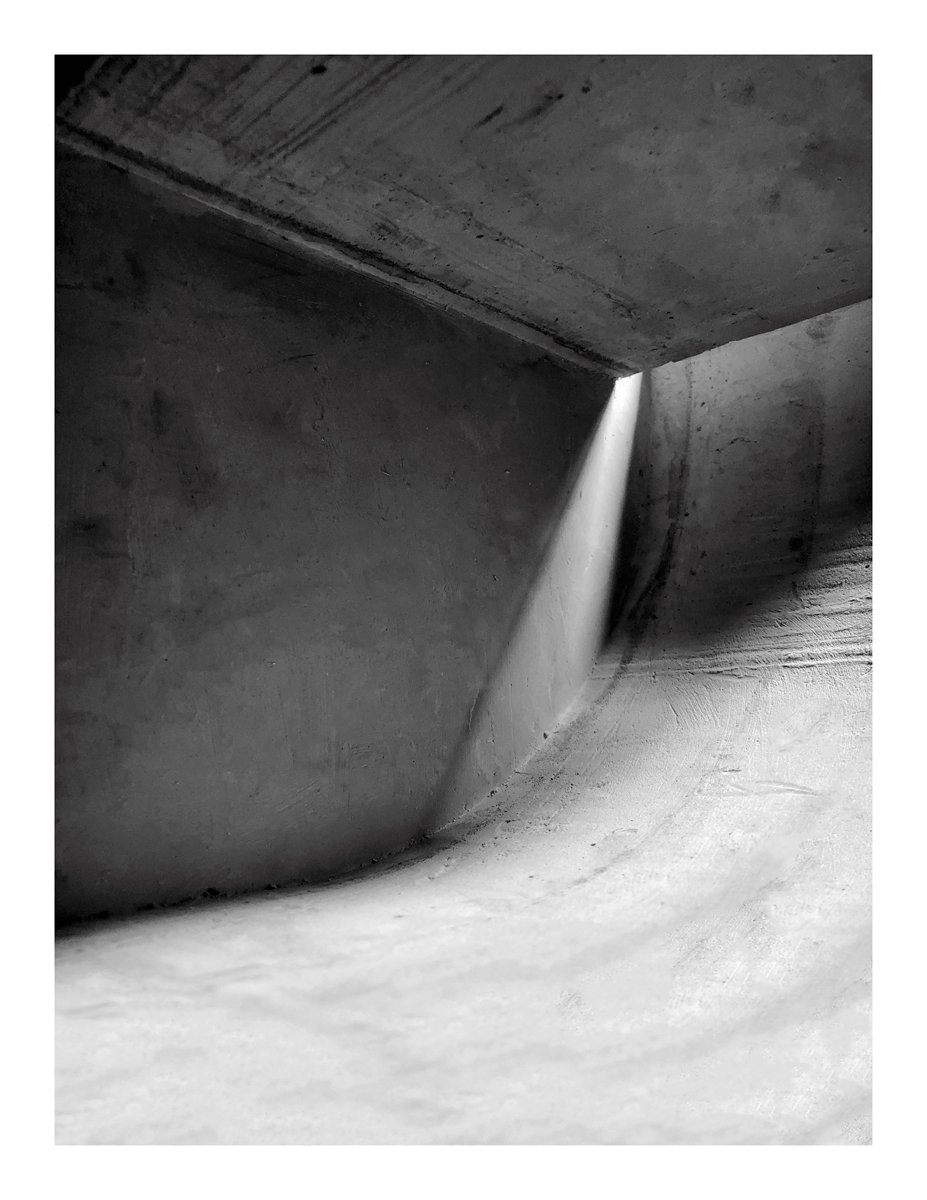
April 29, 2021
Future100: Students Investigate Sacred Space
In designing places for worship, reflection, and ritual, architecture and interior design students question how design bridges the sacred and profane.

A Zoroastrian fire temple, a Shinto worship center, a Christian chapel at the water’s edge, a desert retreat for a writer, a memorial to victims of gun violence, a hotel for being alone, and a church built to bring a community together. These student projects may span multiple faiths and interpretations of spirituality, but all achieve a striking intimacy and an emphasis on solitary reflection that make them sacred.
Chloe Cudney’s proposal for a monument to those killed in the Las Vegas massacre of October 1, 2017, uses interlocking volumes and a spiral circulation pattern to create a collection of intimate spaces for remembrance, reflection, and healing.
If Cudney’s memorial is a place to bring people together, Edward Han Myo Oo’s model of a Hotel To Be Alone is a place designed for isolation. Though it’s a four-story building, the rooms within, and particularly the sleeping quarters are rendered in dark gray models and evoke a sense of tightness and solitude. The designer bills it as a meditation center, but one can’t help thinking of a prison.
While not explicitly religious, Henry Chu’s vision for a writers’ retreat in the Mojave Desert suggests that creating art can benefit from the same kind of time-bending aloneness as meditation. Composed of multiple spiral forms that rise out of the sand, it’s a structure meant to inspire visitors to wander, find a nook, and lose track of time.
A collection of concepts centered on religion proved the importance of designing within a framework of natural forces for more traditional places of worship as well. A waterfront chapel designed by Ashley Schwartz is based on an extensive sun study, so that the setting and rising sun illuminates the structure in different ways depending on the season.
Joana Sotomayor’s study for a Zoroastrian fire temple takes that ancient symbolism and brings it indoors, even accommodating a contemporary form of sky burial, a unique Zoroastrian funeral rite.
In a plan for a Shinto shrine in Vancouver, Canada, Elizabeth Koenig lays out a pathway to bring worshippers from the outside world into the sacred space of the shrine through a naturalistic garden that emphasizes the spirituality of nature.
A final project contends that the sacred and worldly need not be completely separated. A church community center designed by Chinne Okoronkwo is an insistent reminder that people worship not only to be alone but to come together, and that sacred spaces can provide the kinds of worldly amenities—places to play, eat, and socialize—that are foundational to a strong community of faith.

Visit metropolismag.com/future100 to see more groundbreaking student work.
HENRY CHU
Cal Poly Pomona
Undergraduate Architecture
NOMINATOR: Wendy Gilmartin, Lecturer
Chu’s writers’ retreat in the Mojave Desert is a secular interpretation of sacred space.
CHLOE CUDNEY
Kansas State University
Graduate Interior Architecture and Industrial Design
NOMINATOR: Michelle Wempe, Professor of Practice
Cudney’s Sacredness Among Scarcity honors those lost in the 2017 Las Vegas massacre.
EDWARD HAN MYO OO
Harvard University
Graduate Architecture
NOMINATORS: Lyndon Neri & Rossana Hu, Partners, Neri&Hu, John C. Portman Design Critic in Architecture
Myo Oo’s A Hotel To Be Alone flips the script on what we expect from a hotel.
ELIZABETH KOENIG
Kent State University
Undergraduate Interior Design
NOMINATOR: Tina Patel, Assistant Professor
In her Shinto shrine for Vancouver’s Japanese population, Koenig creates natural serenity.
CHINNE OKORONKWO
Texas Tech University
Undergraduate Interior Design
NOMINATOR: Erin Hamilton, Assistant Professor
Okoronkwo’s addition to Turning Point Community Church makes room for dining and recreation areas.
ASHLEY SCHWARTZ
Kent State University
Undergraduate Interior Design
NOMINATOR: Tina Patel, Assistant Professor
Schwartz’s The Roots Ecumenical Chapel is a minimalist waterfront chapel in Hawaii.
JOANA SOTOMAYOR
Fashion Institute of Technology
Undergraduate Interior Design
NOMINATOR: Joseph Goldstein, Adjunct Assistant Professor, Interior Design
Sotomayor’s Zoroastrian fire temple creates a contemporary space for an ancient religion.
You may also enjoy “Future100: Soundscapes Combat the ‘Tyranny of the Visual’”
Would you like to comment on this article? Send your thoughts to: [email protected]
Register here for Metropolis’s Think Tank Thursdays and hear what leading firms across North America are thinking and working on today.





